Plant Study
Ginkgo biloba
Family Name: Ginkgo Family Name: Ginkgoaceae
Latin Name: Ginkgo biloba
Common Names: Maidenhair tree, Ginkgo tree, Kew tree, Fossil tree, Temple tree
(ref. #1), Salisburia adiantifolia (ref. #10)
Native American Names: Pei kuo (white fruit, China; most common), Pei yen (white eye,
China), Ling yen (spirited eye, China), Jen Hsing (nut apricot,
China) (ref. #1)
Body System Affiliations:
1. Nervous System
2. Respiratory System
3. Urinary System
4. Cardio-vascular System
5. Digestive System
6. Reproductive System
7. First Aid
8. Pediatrics
9. Skin
Botanical Description: (ref. #2, ref. #4, ref. #10)
Habit: Tree, gymnosperm; Along with cycads, only living seed-bearing plants with
motile sperm
Size: 50-80 ft. tall, up to 100 ft.; 30-40 ft. wide; up to 50 ft.
Arrangement: Alternate along terminal stalks; Clustered on short spur stalks
Leaves: Medium green, golden-chartreuse in the fall; Unusually obovate
(fan-shaped), leaf blade apex sometimes entire, often single vertical slit on
top center; Slightly raised dichotomous veins; Up to 3 inches long, petiole
up to 3 inches long
Flowers: Dioecious; Males have pendulous catkins; Females have 2
inch peduncles in March-May; Can take up to 20-35 yrs. before bearing
fruit; Wind-pollinated
Fruit: Tan-orange oval fruits in great abundance; Cover ground with fleshy
malodorous fruits in Sept.-Oct.
Seeds: Marked by 2 or 3 longitudinal ridges; It is said that 2 ridges=female plants,
3 ridges=male plants
Bark: Light brown-brownish gray bark; Deeply frowned, highly ridged with age;
Central leader usu. splits off into several large trunks; Up to 3 ft. or more in
Diameter; Male trees are taller and more upright; Female trees have an
irregular, visually appealing pattern
Twigs: Tan, light brown, gray; Smooth and reflective in Winter sun; Stout; Many
short spur shoots along older stems and branches Become thready on second
year
Underground Parts: High moisture content
Ecology: (ref. #1, ref. #8, ref. #10)
Habitat: Part shade to full sun; Rich, sandy soils
Range: E. Asia-N. China, cultivated in temperate areas around world; Mostly
extinct in wild, found in only 2 localities: at Guizhou and on
Anhui/Zhejiang border
Native Where: China
Ecological Relationships: Endosymbiotic relationship with green algae inside
embro cells
Western (European-American) Uses/Relationships:
Food: (ref. #10)
Part Used: Seed
Action: Raw
Texture: Soft, oily
Taste: Sweet, somewhat like a large pine nut, sometimes fish-like flavor
Constituents: Rich in Niacin, good source of starch and protein, low in fat
Cautions: Contains possible toxicity that may do harm if eaten raw over
long periods of time
Part Used: Seed
Action: Baked
Texture and Taste: Between a potato and water chestnut
Part Used: Seed
Action: Boiled (can add to soups or porridge)
Nutrition Information: (ref. # 10)
(Per 100g of food)
Calories: 403
Protein: 10.4g
Fat: 3.3g
Carbohydrates: 83g
Fiber: 1.3g
Ash: 3.5g
Minerals:
Calcium: 11mg
Phosphorus: 327mg
Iron: 2.6mg
Sodium: 15mg
Potassium: 1139mg
Vitamins:
Vit. A: 392mg
Thiamin (B1): .52mg
Riboflavin (B2): .26mg
Niacin: 6.1mg
Vit. C: 54mg
Materials/Technology:
Part Used: Oil from seed
Use: Lighting fuel
Part Used: Pulp of fruit
Use: Mixed with oil or wine to make soap
Part Used: Wood
Use: Insect-repellent raw material
Beauty:
Part Used: Leaves
Actions: Firming and detoxifying on skin, powerful antioxidant (ref. #5)
Other: (ref. #6)
Part Used: Wood
Use: Carried for healing
Part Used: Leaves
Use: Used in healing rituals
Part Used: General
Use: Tradition to plant tree on occasion of birth to ensure long life, and death
to ensure longevity in the peaceful afterworld
Note of Interest: Ginkgo leaf is shaped like half the human brain (one
reason ancients believed this to be powerful brain
medicine)
Medicine:
Part Used: Leaves
Medicinal Actions: Antiasthmatic, antibacterial, antifungal, astringent,
cancer, digestive, expectorant, infertility, ophthalmic,
sedative, circulatory vaso-dilator, anticoagulant,
anti-inflammotory, tonic, vermifuge, aphrodisiac,
(ref. #3, ref. #10)
Indications: Artherosclerosis, multiple sclerosis, asthma, heart disease,
hypertension, dementia, Raynaud’s syndrome, Alzheimer’s,
cancer, diabetes, angina, peripheral vascular disease, peripheral
neuropathy, poor circulation, macular degeneration, headaches,
tinnitus, vertigo, hangovers, male impotency, low sex drive
(male and female), inflammation caused by allergies, anxiety,
depression, chill blains, wound plaster (ref. #1, ref. #6, ref. #7)
Body System Associations: Nervous System, Respiratory System, Urinary
System, Cardio-vascular System, Digestive
System, Reproductive System, First Aid,
Pediatrics, Skin
Constituents: Active ingredient-flavonoid glycosides (quercetin,
kaempferol, isorhamnetine and terpenelactones
[ginkgolides A, B, C, J, M and bilobalides]) (ref. #1)
Applications: Capsule form, infusion, inhalant
Preparation: Leaves are harvested in late summer and dried; powdered if
inhalant; powder made into juice and applied for chill blains
Pharmacy: General: 40-80mg GBE, three times a day OR 2-3 c. of tea per
day and gradually work your way up; usu. takes 4-6 weeks,
sometimes up to 12 weeks before feeling any effects; can take
with or without food (ref. #6, ref. #7)
Other: When choosing a ginkgo product, look for these factors: GBE
(ginkgo biloba extract, concentrated form of the herb); should
contain at least 24% flavone glycosides (anti-clotting), and 6%
terpene lactones (blood flow) (ref. #7); Studies have shown that
Ginkgo biloba may reduce cancerous breast tumors by 80%, and can
temporarily slow cancerous brain tumor growth (ref. #9); Can
prevent rejection of transplanted organs and may help with toxic
shock (ref. #1)
Cautions: Unprocessed leaves contain potent allergens which can cause
allergic reactions; may increase blood pressure when combined
with thiazide diuretics (blood pressure med.); insulin secretion
can be affected by Ginkgo biloba; use caution when combined
with trazodone (mood elevator); consult physicain before
combining with prochlorperazine (anti-psychotic drug that may
cause seizures when combined with Ginkgo biloba); in rare cases
Ginkgo biloba may cause dizziness, headache, irritability,
restlessness, diarrhea, nausea, vomiting, or vertigo (these affects
are usually mild and transient); doses over 240mg over an
extended period of time may cause intoxication and/or
disorientation; consult physician if already taking anti-coagulant;
consult physician if already taking aspirin to thin blood (may
cause nose bleeds); this drug is generally considered safe for
long-term use; if side affects are bothersome, discontinue use
(re. #7)
Part Used: Fruit
Medicinal Actions: Antibacterial, antifungal, astringent, cancer, digestive,
expectorant, sedative, vermifuge
Indications: Internal bacteria, fungus, or parasites, cancer, flatulence,
heartburn, anxiety, pulmonary Tuberculosis, asthma, bronchitis
Body System Associations: Nervous System, Respiratory System,
Digestive System, First Aid, Pediatrics, Skin
Application: Pulp is used to make salve or poultice
Preparation: Fruit is macerated in vegetable oil for 100 days
(ref. #10)
Part Used: Cooked seed
Medicinal Actions: Antitussive, astringent, sedative, asthma, phlegm
Cough, urinary incontinence
Body System Associations: Nervous System, Respiratory System, Urinary
System, First Aid, Pediatrics, Skin
(ref. # 10)
Part Used: Raw seed
Medicinal Actions: Anti-cancer activity, antivinous (treatment of alcohol
addiction (ref. #10)
Indigenous and Non-Western Use/Significance/Relationships:
Food: (ref. #1)
Group: Japanese
Part Used: Leaves
Action: Seeds are steamed until hard shell cracks open, kernel is removed
and eaten
Use: Nuts are made into sweets during tea ceremonies as far back as 1492
Use: Nuts (ginnan) used as a sake side dish, 18th century-present
Use: Grilled or boiled for chawan-mushi (potato and steamed egg dish),
Present
Group: Chinese
Use: Traditionally eaten in vegetable dish for New Year
Cautions: Inner seed can cause food poisoning when large quantities are
taken over an extended period of time
Materials/Technology: (ref. #1)
Group: Chinese and Japanese
Part Used: Wood
Use: Ornamental
Use: Insect and fire-resistant raw material (tea ceremony altars, sake tubs,
Go game boards, cabinets)
Part Used: Seeds
Use: Lighting fuel
Use: Soap substitute
Other: (ref. #1)
Group: Chinese
Part Used: Seeds
Use: Thrown at weddings instead of rice because it is a symbol of longevity
Part Used: General
Use: Thought to protect against fire
Use: Symbol of fertility, unity of opposites, changelessness, bearer of hope,
love, longevity, possessing miraculous power
Medicine: (ref. #1)
Group: Traditional Chinese Medicine
Part Used: Seeds
Medicinal Actions: General: asthma, cough suppressant, blenorrhea,
antispasmodic; Raw: cancer, antivinous; Cooked:
peptic, anthelmintic
Energetics: Kidney yang tonic (increases sexual energy)
Indications: Asthma, coughing, blenorrhea, uterine fluxes, cancer, alcohol
addiction, constipation, heart burn, parasites
Constituents: Urish oil (allergen similar to poison oak)
Cautions: Inner seed can cause food poisoning when large quantities are
taken over an extended period of time
Part Used: Leaves
Medicinal Actions: Skin treatment, head sore, freckles, chill blains, wound
plaster, anti-diarrheal
Group: Traditional Indu Medicine
Medicinal Action: Constituent of an elixir called “Soma”
Propagation:
Technique: Mainly cuttings from male cultivars onto seedling rootstock (ref. #2)
Technique: Planting from seed
Zone: 4-9
Light: Partial shade to full sun
Moisture: Wet, moist, or dry
Soil Type: Sandy, loam, clay
pH: 3.7-7.0
Functions: Shade tree, street tree, specimen plant
Transplant: Transplants readily, easy to establish; roots have high moisture content
and are easily destroyed by frost
(ref. #4, ref. #8)
Harvest:
Plant Part: Leaves
Season of Harvest: Late summer/early autumn before leaves start to turn color
Ecological Considerations of Harvest: Be kind to the tree!! Pruning scars will not
heal, avoid cutting large branches
(ref. #4, ref. #10)
Personal Experience:
Medicine:
Part Used: Leaves
Desired Medicinal Actions: Brain and memory booster, vaso-dilator
Targeted Indications: Memory loss, hypertension
Procurement:
Source: Radiance Herbs, Downtown Olympia, Wa.
Condition: Dried
Other Infornation:
Application/Preparation/Pharmacy:
Applications: Capsules, infusion
Preparation: Infused 1 c. boiling water with 1 tsp. tea mixture
Pharmacy: Capsules: Two per day for 1 month, Infusion: 1 tsp. dry
herb mixture few times per week for 1 month (taken at
different times in life)
Reason/Purpose: Increase brain power, lower blood pressure Experience: After one month of taking capsules, I scored higher
than usual on my tests; After drinking tea, I
immediately felt more alert, may have been placebo
affect
Cautions based on experience: None
Other Notes of Interest:
History:
Ginkgo has the earliest leaf fossils recorded (270 million years ago during Permian Period), they were around during the time of dinosaurs. At least two species existed in Asia and Europe. It is believed that the Ginkgo tree declined at the time of the dinosaur extinction, due to less seed dispersers. Ginkgo was thought to have been extinct until 1961 until it was discovered by a German named Engelbert Kaempfer in Japan. At that time, it had existed mainly in monasteries and mountain palaces, where it was cultivated by Chinese Buddhist monks.
Native to China, Ginkgo was spread by seed to Japan and Korea. It has remained relatively unchanged since the Age of Dinosaurs, and is possibly the oldest living seed plant on the planet. It is the only living link between ferns and conifers.
In 1945, a Ginkgo tree outside a temple in Hiroshima was the only thing that survived an atomic bomb with no deformations; the temple was rebuilt around the tree with a plaque that reads: “No More Hiroshima”; the Ginkgo tree is therefore regarded as a ‘bearer of hope’.
The leaves of the Ginkgo tree used to be expensive because of their gold color in autumn.
Yoko Ono planted a wish tree in Detroit, MI; a plaque reads: “Whisper your
wish to the bark of the tree”. The Ginkgo is an analogy for the Giant Panda’s survival in China, and in 1955 it was planted as a peace tree in New Bedford, Ma. by schoolchildren as a hope for all nations to join the United Nations in work toward peace. (ref. #1)
Cautions: Unprocessed leaves contain potent allergens which can cause
allergic reactions; may increase blood pressure when combined
with thiazide diuretics (blood pressure med.); insulin secretion
can be affected by Ginkgo biloba; use caution when combined
with trazodone (mood elevator); consult physicain before
combining with prochlorperazine (anti-psychotic drug that may
cause seizures when combined with Ginkgo biloba); in rare cases
Ginkgo biloba may cause dizziness, headache, irritability,
restlessness, diarrhea, nausea, vomiting, or vertigo (these affects
are usually mild and transient); doses over 240mg over an
extended period of time may cause intoxication and/or
disorientation; consult physician if already taking anti-coagulant;
consult physician if already taking aspirin to thin blood (may
cause nose bleeds); this drug is generally considered safe for
long-term use; if side affects are bothersome, discontinue use
(ref. #7)
Inner seed can cause food poisoning when large
quantities are taken over an extended period of time (ref. #1)
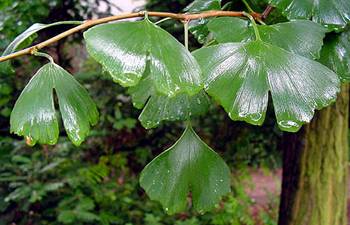
Ginkgo leaves, Cor Kwant (ref. #1)
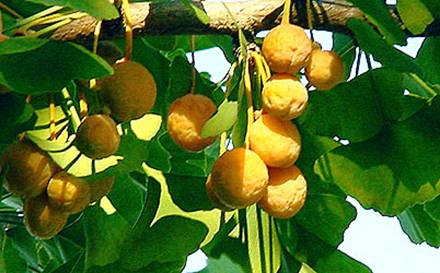
Female Ginkgo fruits, Cor Kwant (ref. #1)

 Variety of Ginkgo Leaves (ref. #1)
Variety of Ginkgo Leaves (ref. #1)
Female Ginkgo Ovules and Leaves, Cor Kwant (ref. #1)

Male Ginkgo Flowers and Pollen, Cor Kwant (ref. #1)
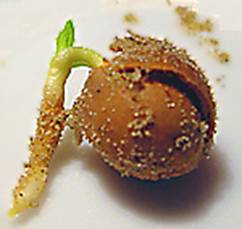

Ginkgo Germination, Cor Kwant (ref. #1)
GinkgoSeedling-3 months old, Cor Kwant (ref. #1)----------------------------
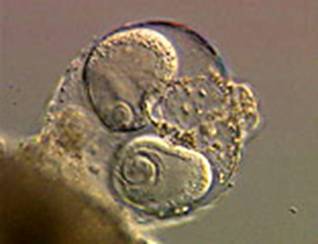
Two motile Ginkgo Sperm, photo by TokyoCinema Inc. (ref. #1)

Bombed Ginkgo outside palace in Hiroshima (ref. #1)
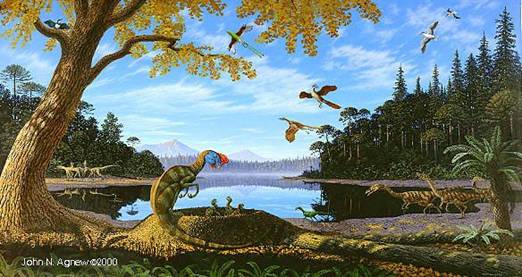
Drawing by Nick Longrich (ref. #1)
Ginkgo existed at time of dinosaurs, drawing by John N. Agnew (ref. #1)

Xialin Village, QingLianfeng Town, LinAn, Zhejiang, photo by Jimmy Shen (ref. #1)
References Cited:
1. Body and Fitness.com.
http://www.bodyandfitness.com
2. Bonsai Clubs Int’l, Christina Ann Whitford. 1998-2003.
http://www.bonsai-bci.com
3. Brightsurf.com, BC Media. 2006.
http://www.brightsurf.com
4. Gardensablaze.com, bhmblaze.
http://www.gardensablaze.com
5. Gingko Pages, The, Cor Kwant. 1999-2006.
http://www.xs4all.nl/~kwanten/name.htm
6. Make-up USA.
http://www.make-upusa.com
7. Plants For A Future, Rich Morris. June 2004.
http://www.pfaf.org
8. Pocketgardener, Dr. Tim Rhodus. Ohio State University.
http://hcs.osu.edu/pocketgadener/
9. Tree Help.com. Buffalo, NY. 2000-2006.
http://www.treehelp.com
10. Whole Healthmd.com, LLC. Sterling, Va. 2000.
http://www.wholehealthmd.com
Tara Burnett-Art, Environment and the Child: Walking The Wheel of the Seasons-Winter Quarter-2006